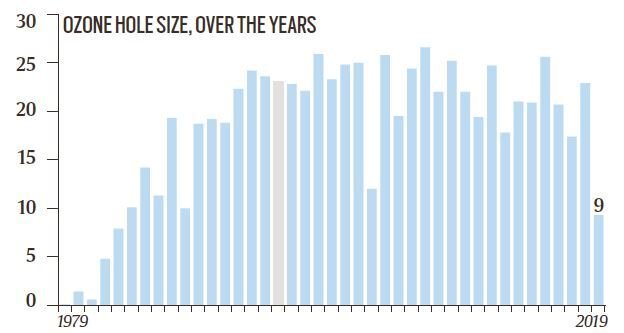Smallest Ozone Hole in Decades | 24 Oct 2019
During September and October months of 2019, the ozone hole over the Antarctic has been the smallest observed since 1982.
- The presence of abnormal weather patterns in the atmosphere over Antarctica is responsible for shrinkage of the ozone hole.
- Due to the warmer temperatures over Antarctica in 2019, fewer polar stratospheric clouds formed and they couldn’t persist longer, which limited the ozone-depletion process.
- Thus, shrinkage of the ozone hole is not a sign of a fast track recovery of atmospheric ozone but the result of the temporary warming of Antarctica.
Ozone
- Ozone (composed of three atoms of oxygen) occurs both in the Earth's upper atmosphere (stratosphere) and at ground level ( troposphere). It can be good or bad, depending on where it is found.
- Good Ozone: Ozone occurs naturally in the Earth's upper atmosphere (Stratosphere) where it forms a protective layer that shields us from the sun's harmful ultraviolet rays.
- Ozone-depleting gases like chlorofluorocarbons (CFCs), HCFCs, halons, destroy this protective shield and causes the hole in the ozone.
- India had adopted the Kigali Amendment to the Montreal Protocol (aims to phase-down hydrofluorocarbons).
- Bad Ozone: In the Earth's lower atmosphere (troposphere) near ground level, ozone is formed when pollutants emitted by cars, power plants, industrial boilers, refineries, chemical plants, and other sources react chemically in the presence of sunlight.
- Surface level Ozone is a harmful air pollutant.

